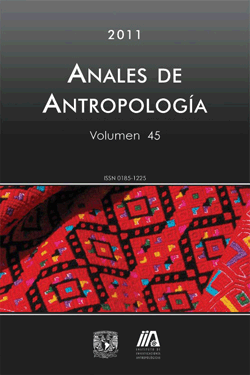Kinanthropometry of muscular volumes of elite sportsmen from olympic fighting sports
Main Article Content
Abstract
The fighting sportsmen from boxing (box), judo (jud), freestyle wrestling (frew), Graeco-Roman wrestling (grow) and taekwondo (twd) show specific biomechanical models of body which favor the success in the combat and determine the total amounts and spatial distribution of body masses of each weight category. The objective of this paper is to analyze the values and distributions of muscular mass’s volumetric indexes of elite athletes from fighting sports. The anthropometrical data arose from an anthropometric research of Cuban athletes from box (n = 60), jud (n = 60), frew (n = 51), grow (n = 48) and twd (n = 28). The calculation of bc indexes was done using the geometrical model of total and muscle areas (tma) of the segments of extremities and the corrected muscular circumference of thorax equation proposed by Ross and Kerr (1991). The frew and grow expressed similarities for all volumetric indexes. The tma and the corrected muscular circumference of thorax results appointed the lesser volumes of extremities and thorax, respectively, for box and twd than the ones of the others. The sense of the kinanthropometric indexes joint up the sports in two groups: the twd-box one and the jud-frew-grow one. The data partially verified the hypothesis due to that was not possible to note the differences of muscular volume of the torso and extremities for each specialty.
Downloads
Article Details
Citas en Dimensions Service
References
Asociación Médica Mundial
[en línea] Declaración de Helsinki. Principios éticos para las investigaciones médicas en seres humanos, Asociación Médica Mundial, <http://www.wma.net/s/policy/b3.htm>.
Betancourt, Hamlet
El cuerpo humano del bailarín de ballet. Un análisis clasificatorio del danzante contemporáneo cuban, tesis doctoral, Universidad Nacional Autónoma México, México.
Canda, Alicia, L.Sainz, T. de Diego y José L. Pacheco del Cerro
Características morfológicas del decatleta vs especialistas, Archivos de Medicina del Deporte 18 (84): 77-285.
Carvajal, Wiliam, Andrés Ríos, Ibis Echevarría, Miriam Martínez y Magalis Castillo
Tendencia secular en deportistas cubanos de alto rendimiento: período 1976-2008, Revista Española de Antropología Física 28: 71-81.
Donskoi, Dmitri y Vladimir M. Zatsiorski
Manual Biomecánica de los ejercicios físicos, Pueblo y Educación, La Habana.
Le Boulch, Jean
Hacia una ciencia del movimiento. Introducción a la psicokinética, Paidós, México.
Lohman, Timothy G., Alex F. Roche y Reynaldo Martorell
Anthropometric standarization reference manual, Human Kinetic, Champaign.
Norton, Kevin y Timothy Olds (eds.)
Anthropométrica, Biosystem, Servicio Educativo, Rosario.
Pompeu, Fernando A. M. S., Daniele Gabriel, Bianca Gama Pena y Pedro Ribeiro
Áreas de secção transversa do braço: implicações técnicas e aplicações para avaliação da composição corporal e da força dinâmica máxima, Revista Brasileira de Medicina do Esporte 10 (3): 202-206.
Ross, William D., Deborah A.Kerr
Fraccionamiento de la masa corporal: un nuevo método para utilizar en nutrición clínica y medicina deportiva, Apunts 18: 175-187.
Ross, Wiliam, Robin V. Carr y J. E. Lindsay Carter
[cd-rom] Anthropometry Ilustrated, Turnpike Electronic Publications, Vamcouver.
Strojnik, Vojko, T. Apih y Franci Demsar
Cross-section areas of calf muscles in athletes of different sports, Journal of Sports Medicine and Physical Fitness 35 (1): 25-30.
Esta revista usa una licencia CC del tipo CC BY-NC-ND 3.0. Se maneja bajo el esquema de acceso abierto, con una licencia Creative Commons Attribution-NonCommercial-NoDerivs 3.0 Unported.
